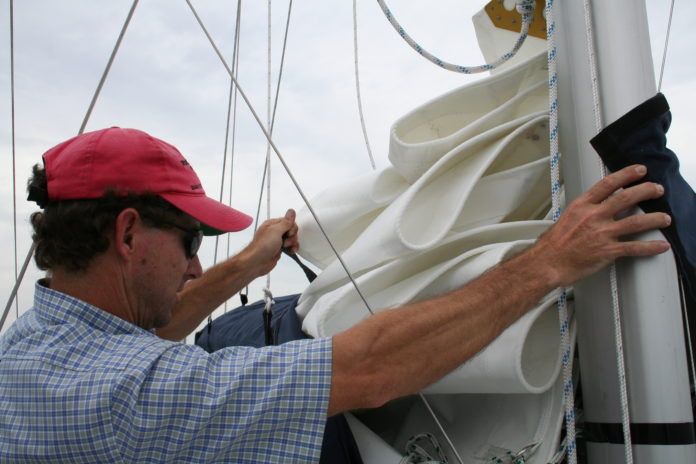Of all the lessons the sea can teach, one of the greatest is humility. For going to sea is an act of submission, exposing ourselves to the mercy of the wind and waves with the hope that we and our boat are worthy. In truth, we are never fully prepared, so going to sea also involves a leap of faith, a belief that a greater force or plain dumb luck will make up for our shortcomings.
Though I’m sure one exists, I’ve yet to meet a sailor who isn’t guided by a sense of humility. Some more readily admit their faults, but all I’ve known are quick to downplay their achievements and give due credit to others.
It was this thought, and the coming feast of Thanksgiving, that prompted reflection on all that sailors like me have to be thankful for. It’s easy to appreciate our good fortune on a tradewind passage—with the log ticking off the miles, and cloud streets stretching above us. But, looking back through the lens of time, it’s clear even the roughest passages have their gifts.
Here then, as Practical Sailor embarks on its 50th year of publication, are a few things I’m thankful for—or expect to be in the year ahead.
A working head. Sure, you can survive with a bucket, but 10 years is enough—at least for me. Guided by tech Editor’s Drew Frye tour through the world of dessicating heads and his reports on controlling head and holding tank odor, I’ll be improving the sanitation system aboard Opal, my 1971 Yankee 30, later next year. Having spent the last few weeks reviewing our ebook Marine Sanitation, a four-volume compilation of our research on this topic, I think I have a good handle on the science of flushing.
A crisp, new furling genoa-at a bargain price. A head-to-leach tear in the mainsail takes away much of the thrill out of a landfall on Tahiti. Ever since arriving to Papeete with sailmaker’s needle in one hand, I’ve paid scrupulous attention to the condition of my sails. Although Frye’s recent report on getting the most out of older sails suggests my aging genny might have some years left, I’ve decided upon replacement. I’ve got plenty of other help in this area, including a series of articles by Ralph Naranjo in our three-volume ebook “A Look at Sails.”
DIY boatyard gurus. Angels appear in the strangest of places. Mine emerge from the dusty back lots of boatyards, often on their lunch hour. They offer patient advice—or a charitable critique—and lend a tool if needed. Over the years, Practical Sailor has been fortunate to earn the support of some of the most knowledgeable experts in the industry, people who put far more energy into a project than we ever expected, simply because they believe in our cause. Some of the best advice comes right over the transom. One of my favorite activities each month is reading the letters featured our “Mailport” section.
Paper charts. As convenient as it is to wander familiar waters while guided by an LCD screen, I believe paper charts still have a place on the modern cruising boat. Aside from the fact that they stand up to electrical gremlins better than plotters and computers, paper charts help keep our piloting skills sharp and allow us to quickly survey the near and distant details of our surroundings. Which ever system you rely on, its important to be aware of the inherent inaccuracies, which Naranjo described in his report “In a Perfect Position to Fail.”
Paper magazines (and the people who read them!). The digital age is a marvel, but there is still a need for publications like Practical Sailor. Beside the tactile satisfaction of flipping through pages, there is something nice about a magazine you can shove in your briefcase, roll up in your coat pocket, or read in the head (preferable one that is working).
And last but not least, I am thankful for the friends and family who share a healthy obsession with boats, the ocean, and the magic and mystery they hold. Without them, no Thanksgiving feast would be complete.

































